A user wants to quickly find a product, pay without issues, and pick up their order in a convenient way. The app should streamline every step: from search, through cart and payment, to pickup or delivery. When one element doesn’t work well, conversion drops. A successful ecommerce app, like Amazon, combines seamless navigation, personalized recommendations, and advanced checkout options to drive business growth and customer engagement.
This article focuses on what makes a great mobile commerce app how these apps connect with customers, enhance shopping experiences, and capture a growing share of the mobile shopping market.
You can see this with market leaders. Carrefour expanded Scan&Go with practical options: manual code entry, scan with flashlight, fast scanning, in-store price checker – all making in-store shopping smoother.
McDonald’s in the U.S. connects orders with a four-digit code for drive-thru and mobile wallets; the Polish version relies mainly on coupons and a simple points system.
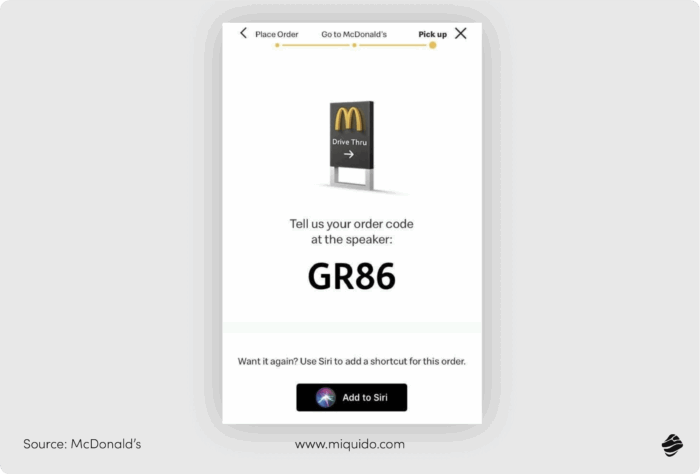
In fashion, Zara’s app has Store Mode, letting you see on a store map where a product is located (Click & Find), buy items available in a chosen store and pick them up in about 120 minutes (Click & Go). It also includes fitting room reservations and Pay&Go – scan a tag and pay without a cashier. New stores are adding automated pickup/returns points. This truly shortens the visit and merges online with offline without forcing users to learn new habits. As an alternative to native apps, a progressive web app offers a fast, reliable, and app-like experience directly through mobile browsers, making it easier to reach more users.
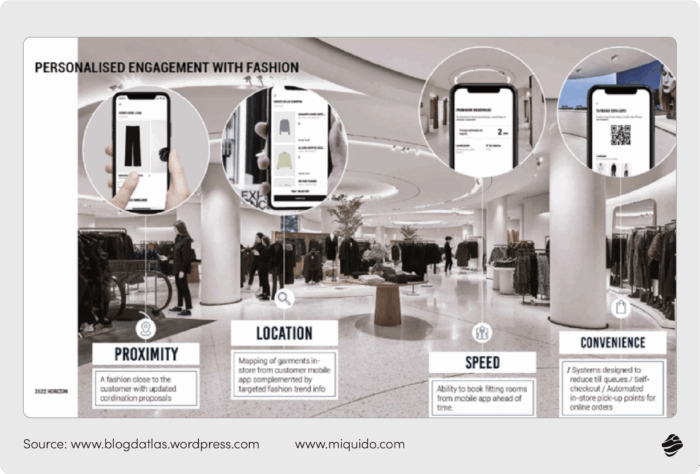
Foot Locker is growing its FLX program and announcing “Heat Monitor” for product launches and “Store Mode” to scan SKUs and check size availability in-store.
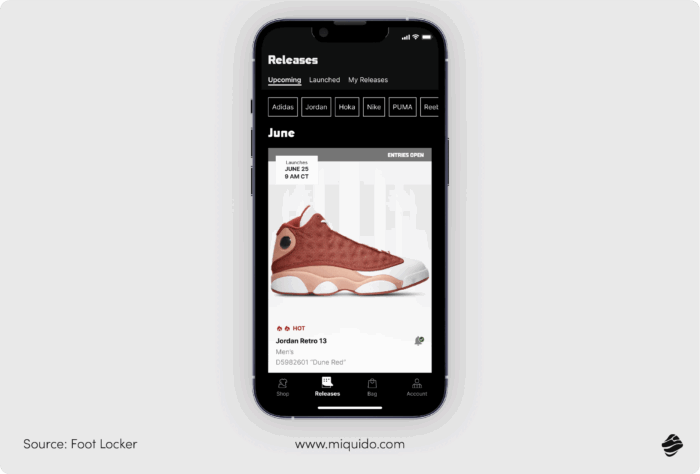
Below, you’ll find a list of features divided into fundamental functionalities (must-haves for any mobile eCommerce app) and competitive differentiators found in market leaders.
Ecommerce mobile app development essentials
Developing a successful ecommerce mobile app requires more than just great design, it demands a strategic approach grounded in thorough market research and careful planning. Ecommerce mobile app development is a multi-step process that involves identifying your target audience, understanding their needs, and implementing key features that set your app apart in the competitive ecommerce industry. In this section, we’ll explore why market research and strategic planning are the foundation of any effective ecommerce mobile app development project.
Market research and strategic planning
Market research and strategic planning are the cornerstones of successful ecommerce mobile app development. Before diving into the development process, it’s essential to gain a deep understanding of your target audience, their shopping habits, preferences, and pain points, as well as the competitive landscape and current market trends. This research helps you identify opportunities, anticipate challenges, and define the unique value your ecommerce app will offer.
Strategic planning builds on this foundation by setting clear goals, outlining the app’s core objectives, and prioritizing the key features that will deliver the most value to your users. Essential features such as user-friendly product descriptions, secure payment gateways, and seamless social media integration should be considered from the outset, as they can significantly enhance customer satisfaction and drive engagement. Additionally, understanding the ecommerce app development cost and aligning it with your business goals ensures that your investment delivers maximum ROI.
By combining comprehensive market research with thoughtful strategic planning, businesses can create ecommerce mobile apps that not only meet but exceed customer expectations. This approach leads to higher customer engagement, increased loyalty, and a stronger competitive position in the ever-evolving ecommerce market.
The pillars of modern e-commerce
Logical and predictable site structure with clear menus, breadcrumb navigation, and well-defined product categories, allowing users to find what they need with minimal effort.
- Intuitive navigation and product categorization
Customers expect quick access to products and smooth movement between categories. User-friendly navigation is one of the most important eCommerce features; if users can’t find what they need, they’ll leave. A logical structure with clear categories and subcategories lowers bounce rates and increases engagement. Users benefit from stress-free exploration and efficient product discovery, which significantly boosts user satisfaction by making navigation and product discovery easy and enjoyable.
- Advanced on-site search with filtering
An in app search engine that goes beyond simple keyword matching, with features like autocomplete, typo tolerance (“Did you mean?”), and faceted search (filtering results by attributes like size, color, brand, price), enables users to quickly find products through advanced filtering, sorting, and predictive search.
A “smart” search engine is critical for both B2B and B2C, enabling attribute-based queries, product code (EAN) lookups, and spelling correction. It should be well-designed, visible, and fast. Modern search can even interpret user intent (e.g., “spring wedding dress”). Strong search capabilities directly correlate with higher conversion rates, as high-intent shoppers can instantly find desired products. For consumers, this transforms a frustrating hunt into efficient discovery.
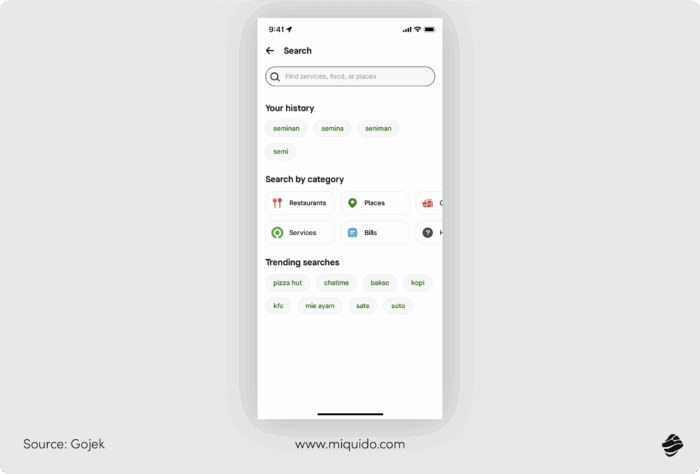
Product discovery & conversion
- High-quality product visuals (photos and videos
Professional, high-resolution product photography from multiple angles, with zoom-in, lifestyle images, and increasingly, short product videos.
Sharp visuals make the site look professional and enhance the shopping experience. Videos can increase purchase likelihood by up to 85%. Clear and detailed visuals boost conversion rates and reduce returns by setting accurate expectations. Consumers gain the confidence needed to buy without physically seeing the product.
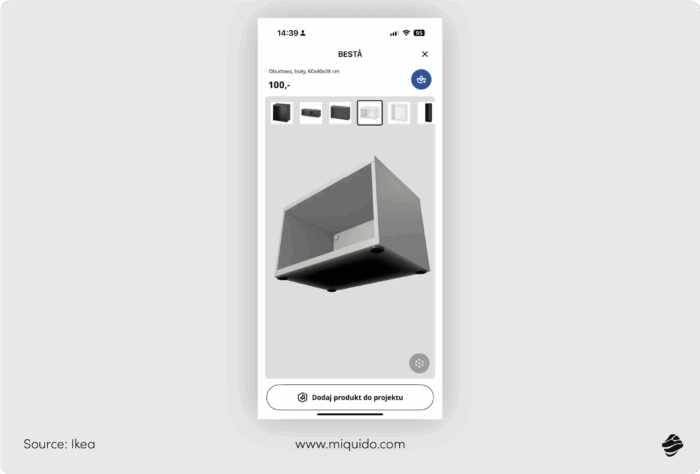
- Detailed product pages (descriptions, specs, availability)
Comprehensive product pages with compelling descriptions, detailed technical specs, transparent pricing, real-time availability, and a visible call-to-action (CTA) button.
A product page must clearly display price, features, availability, and the “add to cart” option. Real-time availability is an essential feature for managing customer expectations and ensuring transparency about stock levels. Detailed descriptions are essential. Transparency on availability and costs builds trust. The CTA should stand out and use action-oriented language. Businesses reduce customer service load and increase trust, while consumers get all the info needed for confident purchases.
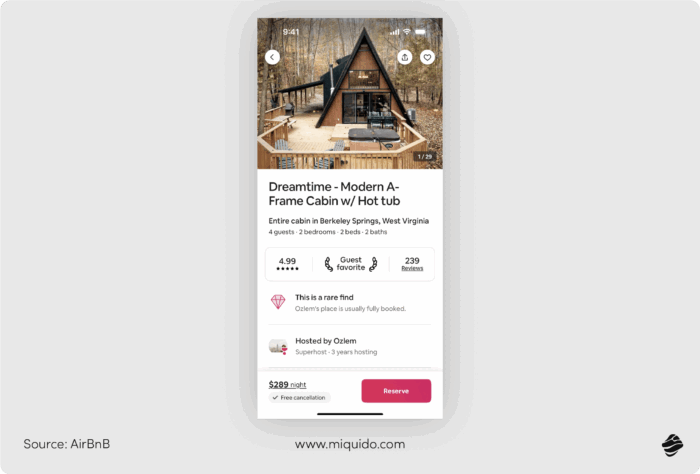
- Customer reviews and ratings (social proof)
A system enabling verified buyers to leave star ratings and written reviews.
95% of customers read reviews before purchasing, and over 70% won’t buy without them. Social proof is a powerful sales driver. Displaying reviews builds credibility and boosts conversions. Businesses leverage credibility; consumers gain unbiased insights that validate choices and foster trust.
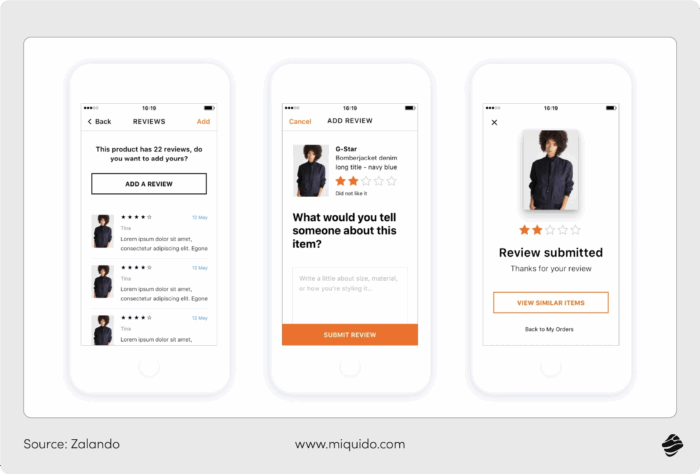
Cart & checkout
- User-friendly cart and seamless checkout
An accessible cart with easy quantity updates and product removal, plus a streamlined checkout (multi-step or one-page) minimizing form fields and distractions.
The cart should be visible (top right), showing key details (name, price, quantity), and allow simple edits. Checkout must be simple, fast, and minimal. Saving the cart is a crucial feature too. A frictionless checkout reduces cart abandonment and protects revenue. Customers appreciate a quick, hassle-free buying process that facilitates efficient transactions and enhances convenience.
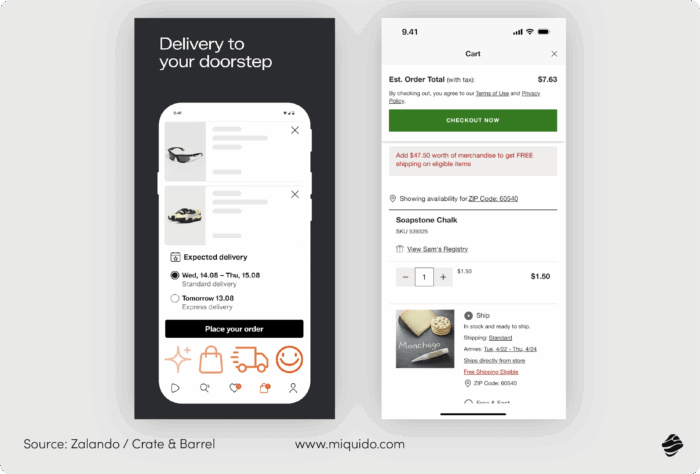
- Integration with multiple payment gateway
Integrating multiple payment gateways is essential to meet diverse customer expectations and improve conversion rates. Offering multiple payment options beyond major credit cards, including digital wallets (PayPal, Apple Pay), local methods (e.g., BLIK), and “Buy Now, Pay Later” (BNPL), provides flexibility and convenience for customers.
Popular payment options improve customer experience and boost conversion. Modern stores should support BLIK, Google Pay, and digital wallets. Payment variety meets different customer preferences, ensuring convenience and trust at checkout.
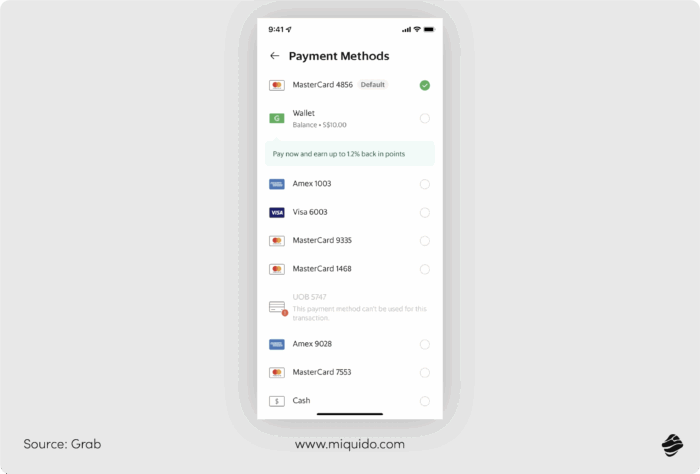
- Robust security features (SSL, compliance)
Essential measures like SSL certificates (HTTPS), PCI DSS compliance, and transparent privacy policies.
SSL is an absolute must. Checkout should include AVS and CVV checks. Companies must comply with data protection laws (like GDPR) and clearly state policies. Strong security mitigates legal and financial risks while building trust. Customers feel safe sharing sensitive data, which is a prerequisite for online transactions.
Customer relationship & support
- Customer account management
A secure portal for account creation, order history, shipment tracking, saved addresses/payment details, and returns processing.
Accounts personalize shopping, save preferences, display order status, and speed up repeat purchases. Businesses drive loyalty and repeat sales; customers gain control, convenience, and transparency. As your business grows, effectively managing customer data is crucial to maintain performance and reliability.
- Comprehensive customer support options
Multiple accessible support channels: FAQ page, contact form/email, phone number, and increasingly, live chat.
Omnichannel support (chat, email, social) signals good service. FAQs, multi-option contact pages, and chatbots are essential. Live chat improves responsiveness and brand reputation. Businesses save costs with self-service options; customers get quick answers and trust reinforced pre-purchase.
- Clear shipping & return policies
Easy-to-find, easy-to-understand pages outlining shipping costs, delivery times, and return/exchange processes.
Often located in the site footer. Transparent policies reduce cart abandonment and set expectations, improving user experience. A user-friendly returns process enhances UX. Businesses avoid disputes; customers feel secure knowing they can return unsuitable items.
Marketing & retention
- Wishlist functionality
A feature allowing both guests and registered users to save products for later.
A wishlist is a must-have. It lets users save items, providing businesses with valuable preference data. This supports targeted campaigns (e.g., “an item from your wishlist is now on sale”). Customers enjoy easy shopping organization and future purchase planning. Integrating a loyalty program with wishlist functionality can further increase customer retention and engagement by rewarding users for saving and purchasing wishlist items.
- Promotion engine and discount codes
A backend system for creating/managing discounts: percentage, fixed amount, free shipping, BOGO (Buy One Get One), redeemable via coupon codes.
Discount codes attract and retain customers. Highlighting promotions, new arrivals, and bestsellers is essential. Flexible discount policies matter in both B2B and B2C. Businesses gain a tool for driving sales and clearing stock; consumers feel they’re getting better value. These strategies also contribute to customer loyalty by encouraging repeat purchases and rewarding ongoing engagement.
- Email marketing & abandoned cart recover
Integration with email marketing platforms for transactional emails (order confirmations, shipping updates) and newsletters. Crucially, includes automated abandoned cart emails.
Cart recovery emails are a must-have. They can use personalization, urgency (“only a few left”), and discounts to re-engage users. Email remains a key channel when personalized and mobile-optimized. Businesses can recover significant lost revenue; consumers get helpful reminders and incentives to complete purchases they were already interested in. Focusing on user engagement through personalized and timely communications is essential for maximizing conversions and building lasting relationships.
Collecting user feedback on these marketing and retention features is valuable for ongoing improvement, allowing businesses to refine strategies based on real customer insights.
Competitive advantage: Advanced features of e-commerce market leaders
- AI-powered recommendation engines and hyper-personalization
Ecommerce apps come in various types, such as B2C, B2B, and C2C, each playing a crucial role in expanding market reach and integrating advanced technologies. Ecommerce applications offer diverse functionalities tailored to different business needs, enabling companies to deliver unique value propositions in the mobile commerce space.
Going beyond simple “related products.” These systems use machine learning (ML) to analyze user behavior, purchase history, and real-time contextual data to deliver truly individualized product recommendations, dynamic content, and even personalized pricing. This is “Personalization 2.0.”
AI analyzes browsing history and purchasing patterns to suggest relevant products, significantly boosting conversion rates and average order value (AOV). This may include personalized homepages and targeted promotions. AI adoption has grown 270% since 2019, showing its shift from a buzzword to a business imperative. Amazon attributes up to 35% of its revenue to ML-driven personalization. It is a key driver of customer lifetime value (CLV) and AOV. It transforms a static product catalog into a dynamic, personal shopping assistant. For any ecommerce application, implementing these advanced features is essential to create a comprehensive and user-friendly online shopping experience. AI-powered recommendation engines and chatbots benefit app users by providing personalized and efficient service, increasing satisfaction and engagement.
- Conversational AI and advanced chatbots
AI chatbots leveraging natural language processing (NLP) to understand complex user intents, provide 24/7 support, answer detailed product questions, guide users through the sales funnel, and even process transactions or returns without human intervention.
Currently, 54% of organizations use some form of conversational AI. These bots can resolve up to 93% of customer queries without human support. They automate responses about order status, returns, and product availability. Leaders deploy AI agents that handle returns or track delivery status, not just FAQs. This drastically reduces customer service costs while improving service availability and response times. It also serves as a powerful data collection tool, gathering insights at scale about customer issues and questions.
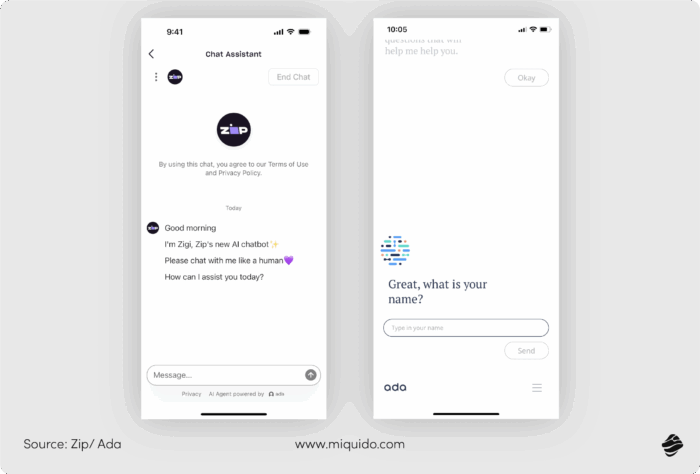
- Dynamic pricing and demand forecasting
AI algorithms analyze market trends, competitor pricing, demand signals, and inventory levels to automatically adjust product prices in real time to maximize revenue and margin.
AI can predict sales spikes and adjust pricing dynamically to prevent overstock or stockouts. This is a key application of reinforcement learning. AI-powered supply chain systems can reduce inventory levels by 20–30% and logistics costs by 5–20%. It transforms pricing from a static, manual task into a dynamic, strategic lever. Companies can optimize the profitability of every transaction and manage inventory with unprecedented efficiency, directly impacting the bottom line.
Immersive shopping experiences
- Virtual Try-On (VTO) using Augmented Reality (AR)
Technology that lets customers use their device’s camera to overlay products (e.g., glasses, makeup, clothing, furniture) onto their image or environment in real time.
The VTO market is projected to grow from around $9B in 2023 to about $46B by 2030, with AR dominating over 63% of the market. VTO can increase conversion rates by up to 30% and reduce returns by 20–30%. It is particularly popular in fashion, beauty, and furniture. IKEA Place is a prime example. It directly addresses the biggest drawback of online shopping: not being able to physically experience the product. It fills the “imagination gap,” giving consumers radical confidence in their purchase decisions, boosting sales, and lowering costly returns. Online stores are increasingly integrating VTO features to enhance user experience and drive sales by offering shoppers a more interactive and personalized way to try products virtually.
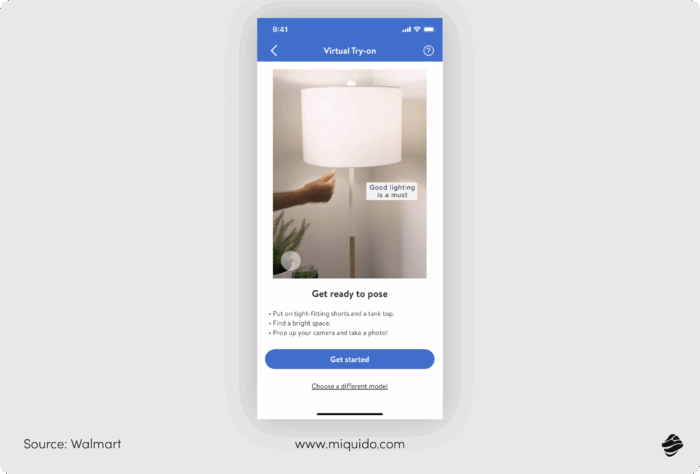
- Visual search capabilities
Allows users to upload an image or use their camera to search for visually similar products in the store’s catalog, powered by AI in computer vision.
Computer vision enables AI to “see” and powers visual recommendation engines. Image recognition can auto-tag items and link similar products, letting customers upload their own photos to find matches. This shifts product discovery from text-based to visual. It captures purchase intent from external sources (e.g., social media images or real-life photos) and provides an instant path to purchase.
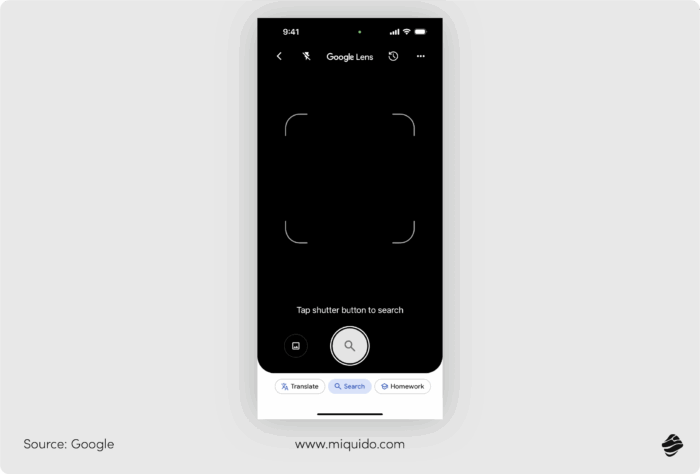
- 3D product configurators and virtual showrooms
Interactive 3D models that customers can rotate, customize (e.g., colors, materials, features), and examine in detail-extending into fully immersive virtual showrooms.
This is part of the trend toward metaverse-like and virtual shopping experiences. Luxury brands use virtual try-ons integrated with showrooms. It is especially valuable for complex, configurable products. It delivers unmatched product engagement and is critical for sellers of customizable or high-value goods (e.g., cars, furniture, high-end electronics). It enables mass personalization at scale and provides a premium, immersive brand experience.
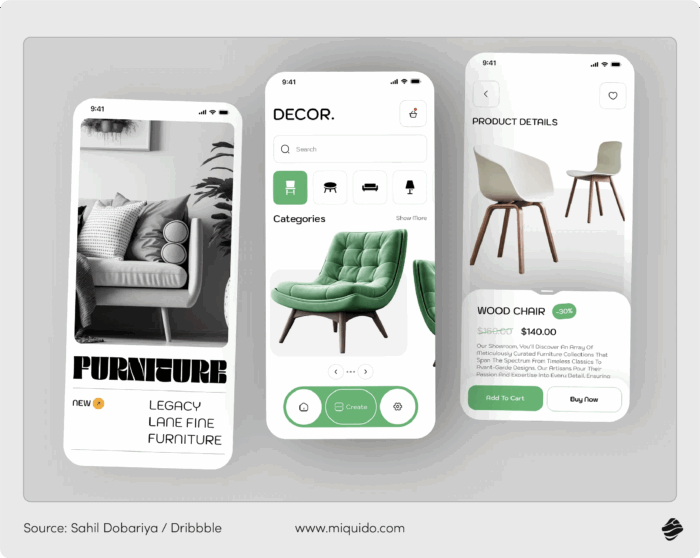
Next-generation sales channels and models
- Integrated social commerce (in-app shopping)
Seamless integration of the shopping journey within social media platforms (e.g., Instagram Shops, TikTok Shop), enabling users to discover, browse, and purchase products without leaving the app. For maximum effectiveness, it is crucial that the mobile app is tightly integrated with the online store, ensuring a seamless shopping experience as users move between channels.
Social commerce is a major trend where in-app shopping is becoming standard. It includes Instagram shopping features and integrating influencer marketing directly into the sales process. It reduces friction to nearly zero by placing the point of sale at the moment of discovery. It leverages impulse buying and the native content/community features of social platforms to drive sales.
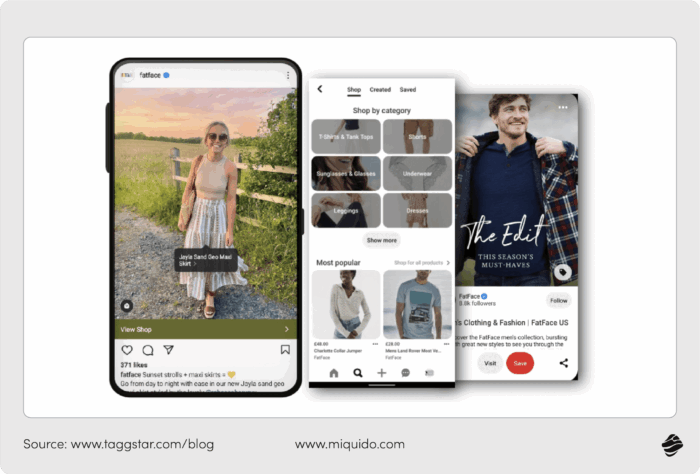
- Live commerce (live shopping)
Selling products during live video streams, where hosts demonstrate products, interact with viewers via chat in real time, and viewers can purchase directly from the stream.
Live commerce enables direct, real-time interaction between seller and customer, building engagement and loyalty. It creates a more personal shopping experience and drives impulse purchases. It blends entertainment with retail (“retailtainment”), forming a highly engaging, community-driven sales channel. It builds authenticity and trust through real-time interaction and can generate significant sales volume in a short time.
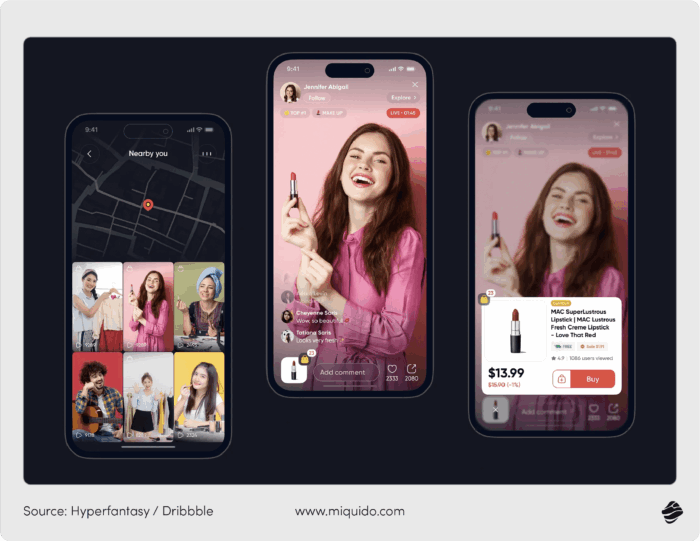
- Voice commerce optimization
Optimizing product catalogs and site architecture to be discoverable and purchasable through voice assistants such as Amazon Alexa, Google Assistant, and Siri.
Voice commerce is projected to grow significantly, with consumers ordering products via voice commands. This requires content optimized for natural language queries and voice search SEO. It leverages a convenience-driven, hands-free shopping channel. Early adopters can gain first-mover advantage in a channel poised for mass growth.
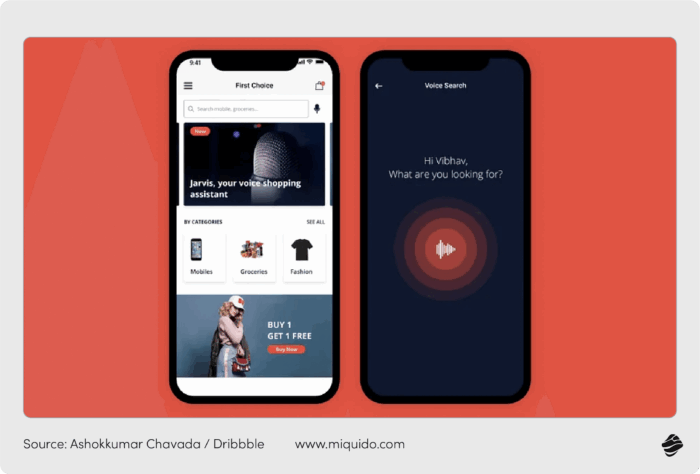
- Advanced subscription models
Evolving beyond “subscribe & save” into curated subscription boxes, membership models with exclusive perks, and personalized subscriptions that adapt to user preferences over time.
Subscriptions are becoming more personalized and experience-driven, tailored to seasons or special occasions. Advanced loyalty programs integrate gamification and exclusive benefits to boost CLV. This creates predictable, recurring revenue streams and builds long-term customer relationships. It shifts the business model from one-off transactions to continuous value delivery, drastically increasing CLV.
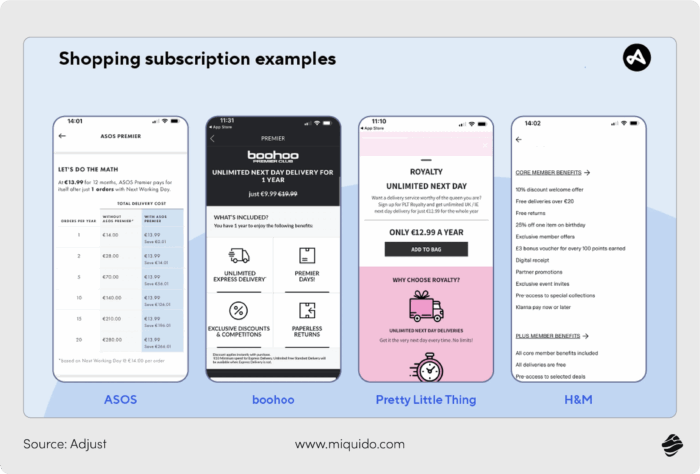
Architectural and omnichannel superiority
- Headless commerce architecture
A decoupled architecture where the front-end presentation layer (the “head”-e.g., website, mobile app, smart mirror) is separated from the eCommerce back-end (cart, checkout, payments).
Headless enables true omnichannel experiences, rich personalization, and faster time-to-market, as front-end and back-end teams work independently. It allows integration of new technologies like AR/VR without rebuilding the whole system. This architectural choice powers many other advanced features, ensuring ultimate flexibility and future-proofing, so brands can rapidly deploy new customer experiences across channels and devices.
- True omnichannel integration (BOPIS, unified inventory)
Seamless integration of online and offline sales channels, including “Buy Online, Pick Up In-Store” (BOPIS), unified inventory management across locations, and a consistent customer profile across all touchpoints.
Omnichannel is a key trend, delivering unified brand experiences across online and offline channels. Customers expect smooth transitions, e.g., starting online and finishing in-store (click & collect). Headless commerce is a key enabler here. By analyzing customer behavior across channels, brands can optimize inventory management and deliver more personalized product recommendations based on real-time data from both online and offline interactions. It leverages physical stores as strategic assets for fulfillment and service, increasing convenience and operational efficiency.
- Quick Commerce (Q-commerce) logistics
A logistics model focused on ultra-fast delivery-often within an hour of purchase-enabled by networks of micro-fulfillment centers or “dark stores” in urban areas.
Q-commerce is rising fast, meeting consumer expectations for instant delivery. It requires heavy investment in logistics optimization and local distribution partners. Speed of delivery becomes a core competitive differentiator. It fulfills demand for instant gratification and can capture market share in categories like groceries, essentials, and pharmaceuticals.
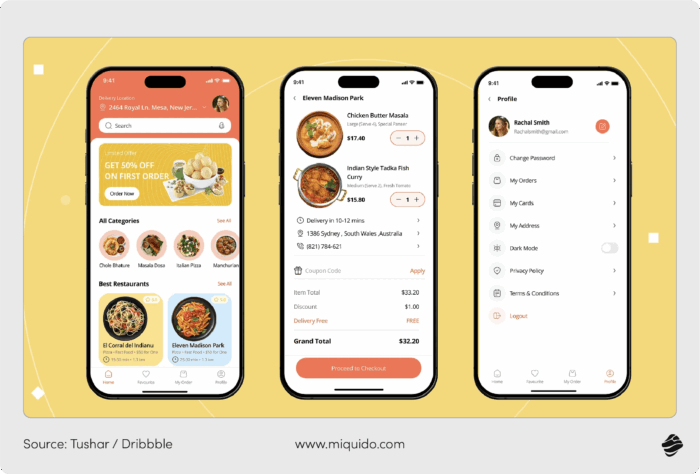
Value- and future-oriented features
- Sustainability and ethical transparency features
Tools giving customers clear insights into product environmental impact, ethical sourcing, and brand sustainability practices. Examples include carbon footprint calculators, material origin maps, and eco-friendly packaging options.
66% of global consumers are willing to pay more for sustainable products. Green consumerism is a major trend; brands embracing sustainable practices gain competitive edge and loyalty. Transparency around sourcing and supply chain ethics becomes a differentiator. It aligns the brand with the values of conscious consumers-especially millennials and Gen Z-building strong brand equity and supporting premium pricing. However, development costs can increase significantly when implementing advanced sustainability and ethical transparency features, as these often require complex integrations and custom solutions.
Custom ecommerce app development is a tailored process that involves careful planning, research, and selecting features to meet the unique needs of a business, making it possible to address specific sustainability and transparency goals.
- AI-assisted re-commerce and secondary marketplaces
Features enabling the buying and selling of used goods, often powered by AI to streamline listings, verify authenticity, and suggest pricing.
Re-commerce is growing fast as consumers increasingly buy second-hand. eBay uses AI to help users list items by scanning QR codes on original labels, auto-filling details like brand, size, and color after authenticity checks. It taps into the circular economy trend, attracting new customer segments and promoting sustainability. For brands, offering buy-back or trade-in programs boosts loyalty and keeps customers within the ecosystem for their next new purchase. A custom ecommerce app allows seamless integration of advanced functionalities like AI-assisted re-commerce and provides scalability to support future growth and evolving business needs.
Comparative feature table: Who should implement what?
After conducting market research and analyzing more than 20 ecommerce app features, ranging from UX fundamentals, loyalty systems, and AI personalization to immersive and omnichannel solutions-it’s time to address the key question: which features should your industry actually adopt? Not every functionality fits every model of ecommerce mobile application development.
That’s why we’ve prepared a simple yet practical comparative table of ecommerce mobile app features, broken down by ecommerce industry verticals:
- ✓ recommended implementation
- ★ strong growth lever
- — optional or niche
| E-grocery | Beauty | Fashion | Travel | Wellness | QSR | |
| Card/coupons/loyalty | ✓★ | ✓ | ✓★ | ✓ | ✓ | ✓★ |
| Personalization (AI, history) | ✓★ | ✓★ | ✓★ | ✓★ | ✓ | ✓★ |
| Embedded payments / wallets | ✓★ | ✓ | ✓ | ✓ | ✓ | ✓★ |
| Scan&Go / price scanner | ✓★ | ★ | ★ | — | — | — |
| Order-ahead / drive-thru codes | — | — | — | — | — | ✓★ |
| Gamification (challenges, mini-games) | ✓ | ✓ | ✓ | ✓ | ✓★ | ✓★ |
| AR/VR / try-on / preview | — | ✓ | ✓★ | — | — | — |
| Visual search / style match | — | ✓ | ✓★ | — | — | — |
| Social commerce / live shopping | — | ✓★ | ✓★ | — | — | — |
| Store Mode / in-store SKU scan | ★ | ✓★ | ✓★ | — | — | — |
| One-click reservation / dense info | — | — | — | ✓★ | ✓★ | — |
| Chatbot/voice for quick actions | ✓ | ✓ | ✓ | ✓ | ✓ | ✓ |
| RFQ / barcode / offline sync (B2B) | ✓ | ✓ | ✓ | — | — | — |
Source: Miquido, based on an analysis of the market.
Not just trends, but a concrete roadmap
Modern ecommerce apps go far beyond online shopping - they shape the full customer experience, from browsing in an e commerce app to checkout and post-purchase customer interactions.
A successful ecommerce mobile app can act as a 24/7 salesperson and loyalty driver, helping brands boost sales, strengthen customer loyalty, and reach a broader audience of smartphone users.
Some essential features are non-negotiable: fast checkout, multiple payment gateways (Apple Pay, Google Pay, PayPal), product availability, and dark mode - all ensuring user satisfaction across different user preferences.
Future-ready innovations in mobile commerce app development include augmented reality, progressive web app architecture, voice commerce, app store optimization, and AI-powered consumer to consumer re-commerce.
Not every brand needs every feature. But the right ecommerce mobile application development strategy, tailored to your ecommerce business model (B2C, B2B, or C2C), transforms an online store into a successful ecommerce mobile app.

![[header] 29 top ecommerce app features you need to know](https://www.miquido.com/wp-content/uploads/2024/02/header-29-top-ecommerce-app-features-you-need-to-know.jpg)


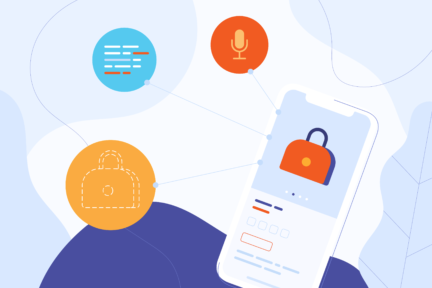

![[header] off the shelf vs. custom ecommerce software](https://www.miquido.com/wp-content/uploads/2020/05/header-off-the-shelf-vs.-custom-ecommerce-software-432x288.jpg)
